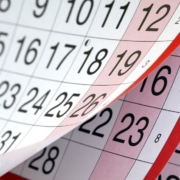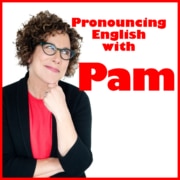Call it whatever you want Accent Modification, Speaking Fluent English, Speaking English Clearly, or just plain ole Learning to talk better. Follow these 5 steps to become a better communicator, others will learn from you, remember you, and enjoying talking to you.
TOP 5 IMPORTANT STEPS FOR SPEAKING YOUR BEST
“It’s about MELODY more than perfect pronunciation.” -Pam
1. Finish the word!
Pronouncing the final sounds of each word is tricky for a few reasons. First you don’t want to over-pronounce the last sound in a word. This sounds like I am contradicting myself. Say the sound but don’t push it out too much. Second, you may be able to say a word perfectly, but once you start talking faster your mouth and lips may not be able to keep up. And third, some of your sounds may be too weak-so you think you are saying the final sound- but a human ear will not hear it.
What you think you are saying, “I‘ll see you at five o’clock”
What others hear, “I_ see you a_-fai_-o’claw_”
What is the big deal? We link words together when we talk. If your last sounds are not pronounced, the important linking skill does not work. And you will not sound smooth.
2. Count the beats of the word.
For example a typical mistake for the word Colorado is “co-ra-do” (3 beats). The correct pronunciation is 4 beats “co-ler-ra-do”
The word particularly is 5 beats “par-ti-cu-lar-ly”, but a typical mistake is saying it with only 4 beats “par-ti-cu-ly”.
The word business is 2 beats “biz-nis”, but many times the mistake is saying it with 3 beats “biz-i-nis.”
What is the big deal? If you reduce the amount of syllables (or say too many) of a word, the listener is left to fill-in-the-blanks and will need a second or two to catch up with you. There will be problems with sounding choppy and a lack of understanding.
3. words stand above rest
Some ^ should ^ the ^
If we said every word with the same voice we would put our listeners to sleep. That’s the definition of being monotone. One tone.
When we TALK like THIS, we would be HEARD, and have PERSONALITY in our CONVERSATION.
What is the big deal? When every word sounds the same, you will sound boring and lack spark in your conversation. Put some effort into your important words. Listeners are waiting for you to emphasize the important words.
4. Parts of a word are bigger than Other parts.
It’s my goal in life to teach everyone how to pronounce the word “develop.” If you continue to pronounce it without the American English stress, it will sound like “devil up.”
The stress should be in the middle syllable. (VEL). “di-VEL-lip” Then the other syllables become smaller.
What is the big deal? Even if you are pronouncing each sound correctly, the word will not sound like itself. While you are on the next sentence, the listener is still wondering why they heard the word “devil.”
5. Say some words L-O-N-G-E-R.
Do you know that the only difference between saying “ice” and “eyes” is one sound. But the listener doesn’t care about that, as much as, the length of the word.
“ice” ends in a /s/. This sounds like a short word with an “s” on the end.
“eyes” ends in a /z/. This word is pronounced L-O-N-G-E-R than the other one. It’s the length of the word (the vowel) that we are listening for. Not the “z” pronunciation.
What is the big deal? Not all words are created equal. Listener confusion.
You’ve Got This!
So there you have it- we need to stretch some words longer, higher, and give our voice personality. We need to pronounce the correct amount of sounds and syllables and link them together in a cohesive way. Once you can do these 5 steps you will sound fluent, more natural, and develop a confident, speaking style.
It’s all about the English melody
for you to become a good conversationalist
and an awesome public (or private) speaker.
The hardest part is to know which skills you are doing correctly and which skills could use some help.
I have quick and easy directions so that you can show improvements within one hour. Of course, this will take some practice so that you can make it a new habit. But these are achievable goals.
If you would like a free 30-minute consultation, contact me, let’s talk- and I will advise you.
Or let’s get right to it. Let me customize our classes together and I will teach only what you need to learn.
Virtual lessons -Private or in Small group Packages. Contact me to discuss the details. No obligation to purchase.
Pam@ProAccentCoaching.com




